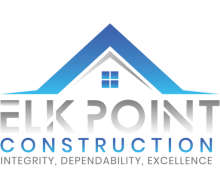EPDM (Ethylene Propylene Diene Terpolymer) roofing is a highly durable and versatile synthetic rubber membrane widely employed in low-slope commercial buildings across the United States and globally. Its remarkable performance and reliability have made it one of the most popular choices for commercial roofing since its introduction in the early 1970s. EPDM roofing offers a range of benefits, including longevity, resistance to environmental elements, and impressive warranty periods, making it a preferred option for many commercial property owners.
TPO (Thermoplastic Polyolefin) roofing is a rapidly growing and widely accepted single-ply roofing membrane in the commercial roofing industry. TPO membranes are manufactured by blending various components together at high temperatures ranging from 210 to 270°C under high shear. This process achieves a continuous stream of TPO material, which can be further processed using different methods, such as a twin screw extruder, continuous mixer, or a Banbury compounder for batch production.
The production of TPO involves precise blending of the primary ingredients, which typically include ethylene-propylene rubber, polypropylene, and fillers. This precise mixing process ensures uniform distribution of the materials, resulting in a consistent and high-quality TPO roofing membrane.
Modified Bitumen roofing is an advanced and evolved version of traditional asphalt roofing. It is composed of asphalt combined with various rubber modifiers and solvents, resulting in a highly durable and flexible roofing material. This type of roofing offers several methods of connecting its pieces, each with unique installation processes that contribute to its strength and longevity.
One common method of installing Modified Bitumen roofing is through a heat application process. In this approach, the seams of the roofing material are heated to melt the asphalt, allowing them to fuse together and create a secure and watertight seal. This heat application method ensures a reliable bond between the roofing components, enhancing the overall integrity of the roof.
Roof coatings offer a cost-effective and efficient solution for protecting and enhancing the performance of existing roofing systems. The dry film thickness of typical roof coatings can vary from a few dry mils (plus or minus 3 dry mils) to over 40 dry mils, depending on the specific coating product and application method. This means that the roof coating becomes the top layer of a composite roof membrane and underlying system, acting as the first line of defense against various environmental factors.
The primary function of roof coatings is to provide an additional layer of protection for the roofing membrane, shielding it from the damaging effects of sunlight, rain, hail, and physical impacts. Roof coatings play a crucial role in preventing premature deterioration and extending the lifespan of the underlying roofing system. The protective barrier created by roof coatings also helps reduce the absorption of infrared and ultraviolet (UV) rays, contributing to energy efficiency and cooler indoor temperatures.

